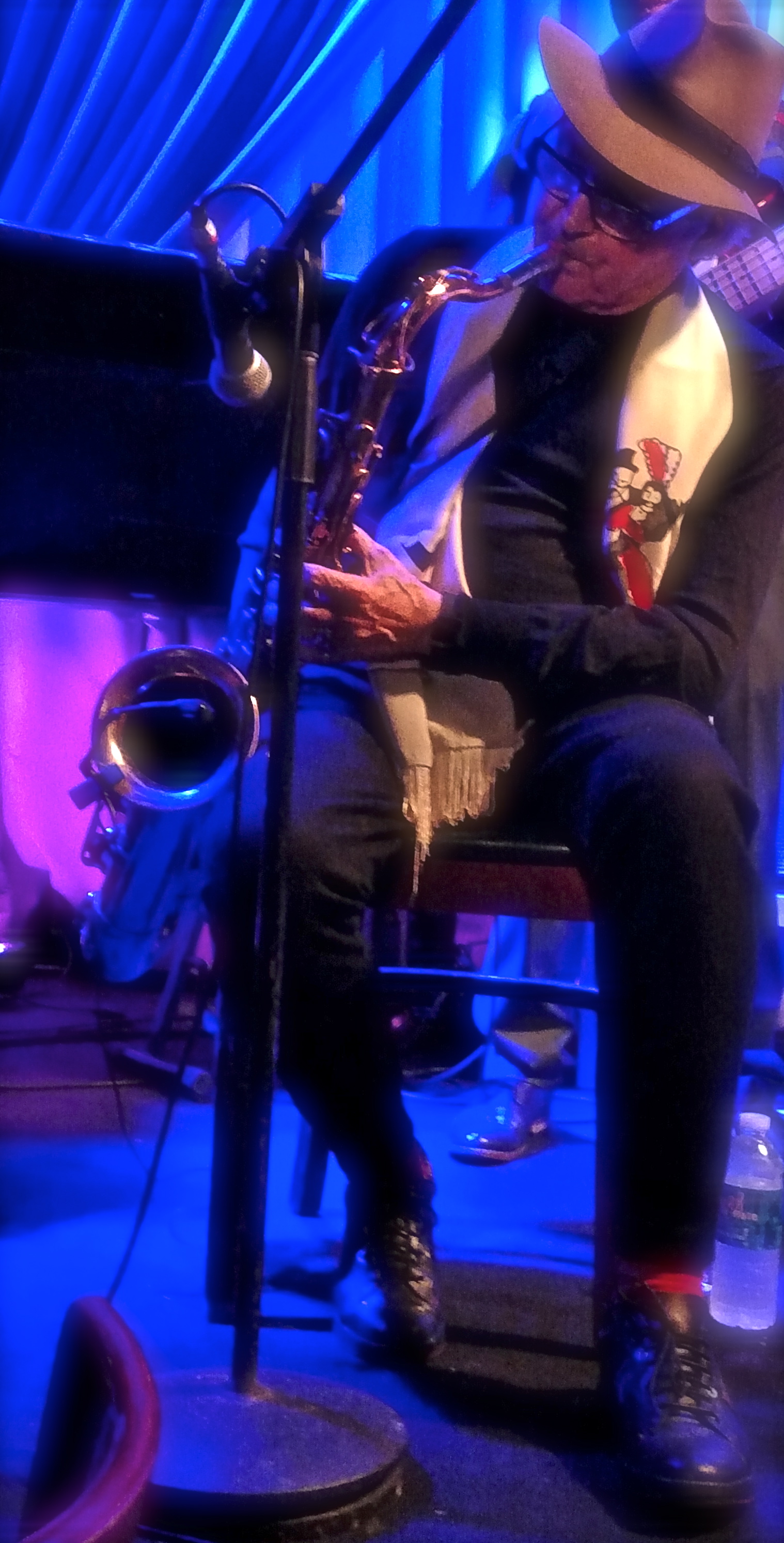I was able, on Monday night, to watch Gato Barbieri play the saxophone from a few paces away. He is in his early 80s, but nothing in his music wears and in the breath that powers it nothing falters. It was, in fact, among the things that struck me the most that his sound, even at its most embroidered, has so little to do with finger work and so much with air. The variations he brings to its flow are subtle, and precise, originating in the body before their manipulation in the instrument. His cheeks don’t fill, as some players’ do, like little blowfish, but flap like pennants, to an internal wind. When he takes his lips from the instrument, leans back, wets them, and tilts his hatted head, it’s as though he hears the sound he sent make its way through the rest of the band, like gusts in a tree or wind in a cul-de-sac.
Perhaps that’s what accounts for the ethereality of his music, its glassy essence. That’s what I think of when I listen to him, recorded, or, now, finally, live: glass, a whole universe of it. Glass that gleams and you slide along. Glass that tinkles, like wine flutes on a tray. Marbles spilled and clattering. Glass fragile and glass unbreakable, transparent and translucent, etched patterns and smoked surfaces, tinged with mortality but filled with air and ecstasy. Glass never quite shattered, its edges not so sharp as to risk a cut but enough to remind you of pain and its paradox, which is its beauty in art.
Barbieri is one of those who led me to the appreciation of the saxophone as an instrument in jazz, and, although it would be a stretch to call him an artist in the genre, to tango, as interest and avocation. I came to him, like so many others, by way of Bertolucci‘s Last Tango in Paris (1972), which, without his soundtrack, would have been a very different film. It remains one of the great achievements in music for the cinema, so integral to the work as to texture the images themselves. The title track is one of those artifacts, in my own life, without which something would be different, perhaps not in an obvious way on the surface, but above or below it, on the level of how it feels to be in the world. It’s the sort of tune that affects the way you step on a sidewalk or enter a room.
He played it on Monday, along with ten or so others. They were ecstatic every one, and vast, yet measured, in restraint, expertly. The simplicity of his gestures as a leader, the hand that quiets the drum or cues the piano, signals the repose and assurance of his artistry. He sits now, rather than stands, as he used to (he is helped along the aisles to and from the stage), but he’s a cool cat still, in hat, scarf, and glasses you could mistake for shades. He did a version of Gershwin’s “Summertime” that seemed to acknowledge where he is in life, this native of Rosario, Argentina, who became a world figure in jazz, Latin and otherwise. It started slow and ended at double speed, going from the laze that, in childhood, seems unending, to the knowledge, born of age, that in fact it isn’t, that our seasons are limited to a lifetime, however suspended they feel in time. His residency at the Blue Note continues on September 28 and November 23, a few days before he turns 83.
Visit the Blue Note for tickets and information.
